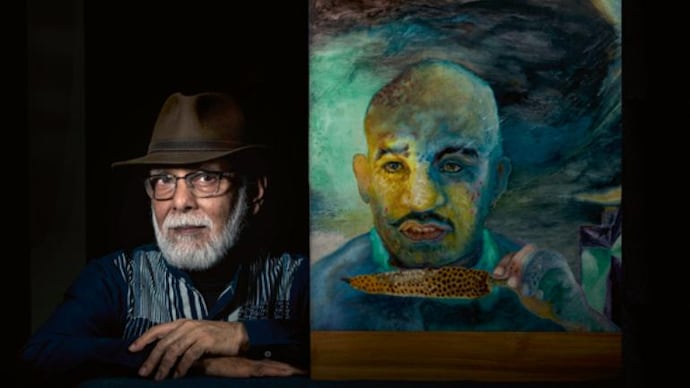The Art of Time | Books
From charcoal drawings on the walls of his childhood home to videos on the fog of fake news, artist Ranbir Kaleka creates what is around him.

Delhi-based artist Ranbir Kaleka insists that the title of his latest exhibition, Waking to the Face of the New Dawn, comprising five works in all and covering all three floors of the Vadehra Art Gallery in Delhi, speaks for itself.
The exhibition coincides with the release of a book on his work, Ranbir Kaleka: Moving Image Works, published by Kerber, Berlin. Kaleka was not interested in a mere book launch. Being a visual artist, he wanted an exhibition. All the works in the exhibition, which opened on March 7 and will be on till April 6, were made after the contributing authors had written their essays, he says.
Recently conferred with the Punjab Gaurav Samman by the Punjab Lalit Kala Akademi in Chandigarh, Kaleka’s paintings, with themes of sexuality and tradition, are surrealistic and often permeated with the enigmatic, the narratives being open to interpretation. For me, a thought has potential only if it is abstracted, for only then would diverse meanings take birth from it. I like the richness of ambiguity in a narrative, says the painter who studied at the Royal College of Art, England in the 1980s.
A cinema buff, Kaleka has, over the years, combined his love for still images and paintings with cinema in his video installations.

Talking about the translation of the contemporary social and political scenario in his art, Kaleka stresses that, as an artist, he can only create what he is made of, what is around him and what impacts his psyche. Isn’t the title of the show itself revealing? It’s taken from one of the installations in the show. There is also one titled Fearsome Acquiescence of a Monotonous Life’. The videos are shot in high definition but I wanted to deliberately blur them, referring to the fog of fake news and rumours, among other things. One work shows death striking from unexpected quarters, he adds.
For the National Award-winning artist (1979), the perception of time assumes utmost importance. The idea of psychological or bodily time being unrelated to time measured by the clock is fascinating. The way time paced itself in my early childhood in my ancestral haveli in Patiala has had an influence in wiring my brain in a certain way, says the artist, adding that he imagines stillness through video by working with duration.
It is hard not to notice the importance of sound in his video works. Kaleka says, Just as I counterpoint colour with black and white in my works, silence is similarly made fecund by pertinent use of sound. Sound need not be a realistic representation of an event but can live independently of the image, even conveying the possibility of a conflicting reading.
Looking back at the years spent in the studio, Kaleka says the most distinct feature has been that there is no hierarchy in art any longer. Earlier, the one doing oil painting on canvas was on top. Not any more, he smiles. On how technology has impacted his work, he asserts that though it has facilitated his process of looking at more possibilities, he does not use it just for the sake of it. Frankly, most of my works are quite low tech.